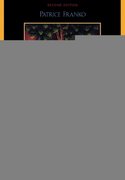I need some help with answers on these questions.
3 . Problems 3-4 Suppose that there are 10 million workers in Japan and that each of these workers can produce either 2 cars or 20 bushels of wheat in a year. The opportunity cost of producing a car in Japan is 10 v bushels of wheat, and the opportunity cost of producing a bushel of wheat in Japan is 1/10 7 cars. Use the blue line (circle symbol) to draw Japan's production possibilities frontier (PPF) on the following graph. Then use the black paint (plus symbol) to indicate the consumption bundle Japan can achieve without trade if it chooses to consume 15 million cars. 6') 20 O 18 - 16 _ PPF -- - .. _ 1' 'l' -+ I I E\" 12 _ I I Wilhout Trade .5 l l E 10 - E. | | ' 3 I I o B I I WithTrade I I 6 _ I 4 _ I I I I I 2 _ I I o o 50 100 150 200 250 300 350 400 Wheat (millions of bushels) Now suppose that the United States offers to buy 5 million cars from Japan in exchange for 150 million bushels of wheat. On the previous graph, use the grey point (star symbol) to indicate the consumption bundle Japan can achieve with trade if it continues to consume 15 million cars. Japan should 7 accept the deal the United States proposes. 5 . Problems 3-6 The following table describes the production possibilities of two cities in the country of Baseballia: Pairs of Red Socks per Worker per Hour Pairs of white Socks per Worker per Hour Boston 5 2 Chicago 4 3 Without trade, the price of a pair of white socks (in ten'ns of red socks) in Boston is 2 1/2 pairs v of red socks, and in Chicago it is 1 1/3 pairs v of red socks. Boston 7 has an absolute advantage in the production of red socks, and Chicago 7 has an absolute advantage in the production of white socks. Boston 7 has a comparative advantage in the production of red socks, and Chicago 7 has a comparative advantage in the production of white socks. If the cities trade with each other, Boston will export red V socks, and Chicago will export white 7 socks. The price of white socks can be expressed in terms of red socks. The highest price at which white socks can be traded that would make both cities better oFf is 2 112 pairs v of red socks per pair of white socks, and the lowest price that makes both cities better off is 1 1/3 pairs 7 of red socks per pair of white socks








